CMT Association’s Market Insights features timely technical analysis of current global markets by veteran CMT charterholders. Each post appears on www.tradingview.com/u/CMT_Association/ in an effort to explain process, tools, and the responsible practice of technical analysis. Shared content and posted charts are intended to be used for informational and educational purposes only. The CMT Association does not offer, and this information shall not be understood or construed as, financial advice or investment recommendations. The information provided is not a substitute for advice from an investment professional. The CMT Association does not accept liability for any financial loss or damage our audience may incur.
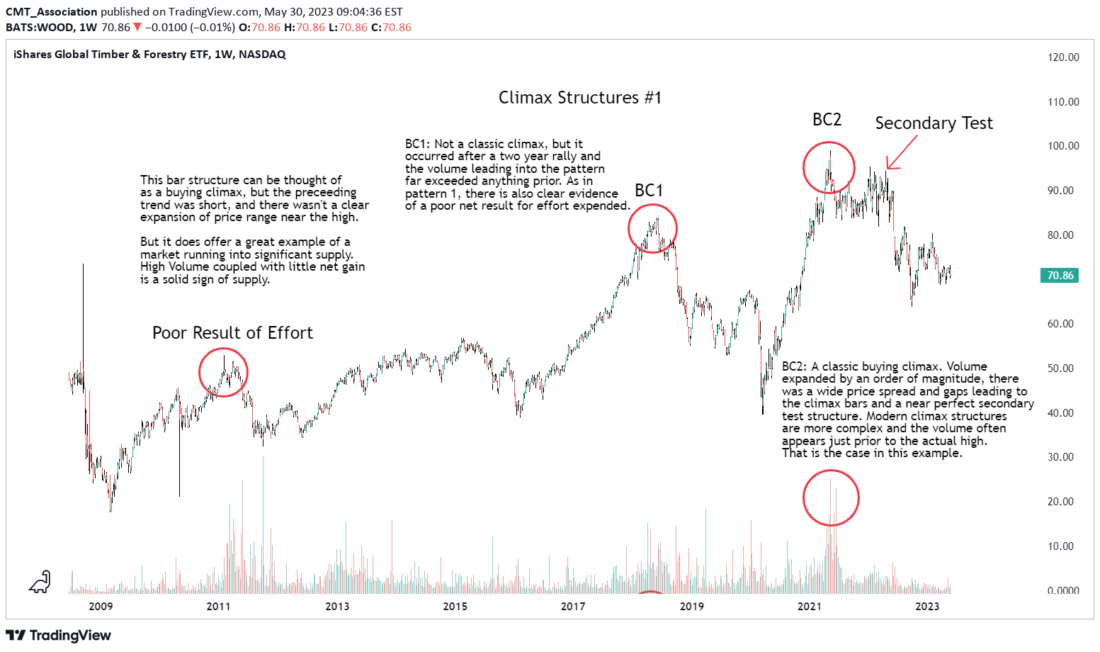
Introduction to Reversal Bar Patterns: Part 1: by CMT_Association on TradingView.com
Over the next few posts, we plan on reviewing single and multi-bar reversal bar structures. In proper context these are among the most important and informative of all tape features. They often mark important turns in the prevailing trend or the completion of a trading range. More practically, they can be utilized to position trades and stops against. These patterns represent easily recognizable change in a market’s supply/demand dynamic and signal that “something important just occurred!” In this piece, we cover the basics of reversal patterns. In coming installments, we will cover key reversals, selling climaxes, springs and upthrusts, and several other common reversal patterns.
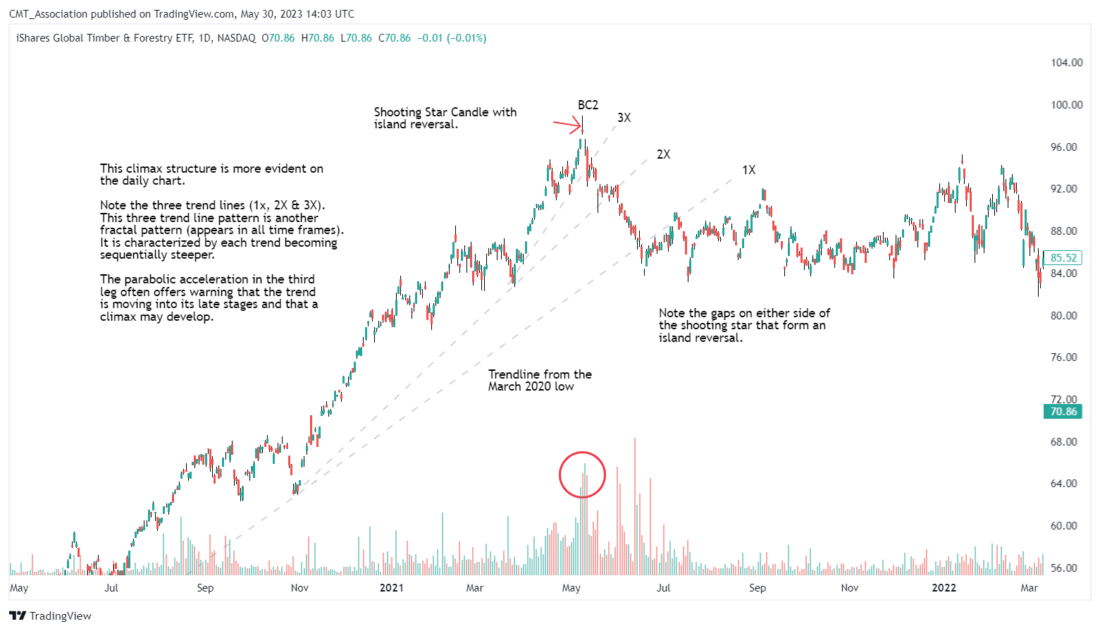
There are two kinds of reversal patterns that draw my interest. The first is the reversal bar or pattern that occurs at or near the culmination of a long term trend. This category includes single bar patterns like buying and selling climaxes, and outside key reversal bars. These patterns are more reliable when traded in the context of overbought or oversold markets and mature trends.
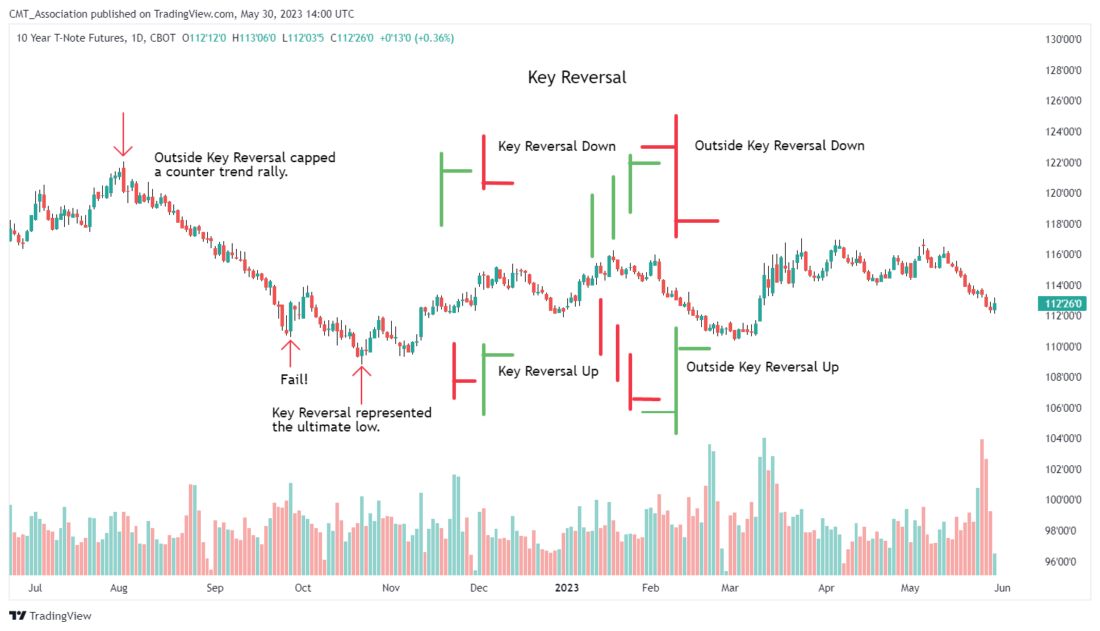
The second is either a one or two bar reversal that occurs at the culmination of a pattern, particularly a trading range. Springs and upthrusts fall into this category. Springs and upthrusts are typically shorter term patterns that can mark new trends but are generally more informative to shorter term trades. All these patterns lose their efficacy in dull, low volatility / trendless markets except as an upthrust or spring to a very well defined lateral range.
There are also many common reversal / hook patterns that occur often in almost every trend. Generally, they occur on non-remarkable volume, do not occur near support or resistance confluences, and fail to display the range extension or volume expansion common to more reliable patterns. I tend to ignore these other than for their potential to set up potential short term trading opportunities.
The most reliable reversal bars and structures are characterized by: A significantly wider than normal price range, an open and close near the extreme of the bar/bars and significantly higher than normal volume in the context of the recent past.

Reversals often occur as a response to news that is in harmony with the prevailing trend. In other words, a bearish reversal in a bullish trend often occurs in conjunction with bullish news. The inability to continue the trend despite supportive fundamental news is a clear sign that the trend is in danger.
Most reversal extremes occur against an emotional backdrop. The fear of missing out (FOMO) entices breakout buyers and late trend followers to enter the market at non-advantageous prices. These late adapting weak handed entrants are less committed and generally have less capital than longer term strong handed early adopting entrants. As a result, their willingness to hold their trade is low, their stops are generally tight and vulnerable.
But the more important driver is traders stopping out of painful losing positions. The final convulsive wash out exhausts the available buying/selling power and allows a significant reversal of the existing trend. Important highs are not made until bad positions are flushed.
Oftentimes, the reversal from these structures is dramatic as the last needful buyer/seller has been forced out. But to be trusted, the structure needs to be tested. One of the hardest patterns in the world to trade is the V top or bottom where no test occurs.
Importantly for traders, reversal bar extremes mark a point beyond which the market should not trade. Initial stops placed just beyond the extreme of the reversal bar and moved higher or lower as the market progresses are generally secure. Reversal bars that occur outside a strong support or resistance are far less reliable than those occurring at or near a strong resistance zone or confluence.
The wider the price spread and higher the volume, the more reliable the signal. The best signals generally occur after prolonged trends.
In my experience, the earlier in the day the reversal pattern occurs, the better.
These patterns are fractal. They appear on charts of all perspectives.
The higher the perspective of the structure, the more important it is. In other words, a buying climax on the weekly chart is incrementally more important than the same structure on the daily.
Finally, like anything else, judgement needs to be developed around the patterns. There is no substitute for staring at thousands of charts. Very few patterns set up as they would in the textbook or in my examples, but the principles are generally consistent.
In our next post we will cover the specifics of Key Reversal patterns.
—
Originally Posted May 30, 2023 – Introduction to Reversal Bar Patterns: Part 1
Disclosure: CMT Association
Shared content and posted charts are intended to be used for informational and educational purposes only. The CMT Association does not offer, and this information shall not be understood or construed as, financial advice or investment recommendations. The information provided is not a substitute for advice from an investment professional. The CMT Association does not accept liability for any financial loss or damage our audience may incur.
Disclosure: Interactive Brokers
Information posted on IBKR Campus that is provided by third-parties does NOT constitute a recommendation that you should contract for the services of that third party. Third-party participants who contribute to IBKR Campus are independent of Interactive Brokers and Interactive Brokers does not make any representations or warranties concerning the services offered, their past or future performance, or the accuracy of the information provided by the third party. Past performance is no guarantee of future results.
This material is from CMT Association and is being posted with its permission. The views expressed in this material are solely those of the author and/or CMT Association and Interactive Brokers is not endorsing or recommending any investment or trading discussed in the material. This material is not and should not be construed as an offer to buy or sell any security. It should not be construed as research or investment advice or a recommendation to buy, sell or hold any security or commodity. This material does not and is not intended to take into account the particular financial conditions, investment objectives or requirements of individual customers. Before acting on this material, you should consider whether it is suitable for your particular circumstances and, as necessary, seek professional advice.
Disclosure: ETFs
Any discussion or mention of an ETF is not to be construed as recommendation, promotion or solicitation. All investors should review and consider associated investment risks, charges and expenses of the investment company or fund prior to investing. Before acting on this material, you should consider whether it is suitable for your particular circumstances and, as necessary, seek professional advice.















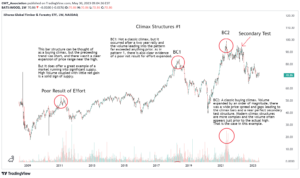
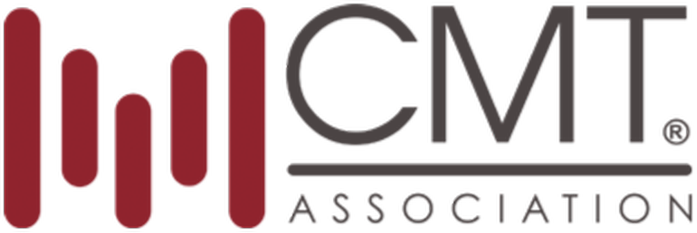



Join The Conversation
If you have a general question, it may already be covered in our FAQs. If you have an account-specific question or concern, please reach out to Client Services.